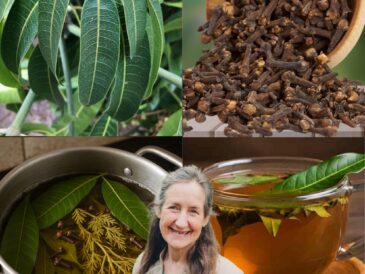In the vast world of natural remedies, few ingredients boast as rich a heritage and potent health benefits as ginger and red onion. These two humble kitchen staples have been trusted allies in traditional medicine for centuries, revered across cultures and continents. Together, they form a powerful combination that supports your immune system, enhances cardiovascular health, boosts brain function, and protects your vision — all while fighting inflammation and promoting overall vitality.
In this comprehensive article, we will explore:
- The unique bioactive compounds in ginger and red onion that fuel their healing properties
- How these ingredients work synergistically to support immunity, heart health, brain sharpness, and eye function
- The scientific evidence validating their therapeutic potential
- Practical tips for incorporating them into your daily routine
- A simple, rejuvenating recipe to kickstart your day with nature’s healing power
Prepare for a deep dive into the world of ginger and red onion, and discover how these unassuming plants can profoundly transform your health journey.
1. Historical and Cultural Significance: A Legacy of Healing
Before modern medicine harnessed synthetic drugs, communities across Asia, Europe, and the Middle East turned to nature for healing. Ginger and red onion feature prominently in this legacy.
- Ginger (Zingiber officinale): Originating in Southeast Asia, ginger has been used for over 5,000 years. Ancient Ayurvedic texts describe it as a digestive aid, immune booster, and anti-inflammatory agent. Chinese medicine employs ginger to balance the body’s energies and treat colds, nausea, and circulation problems. The Greeks and Romans prized it for warming properties and relief of respiratory ailments.
- Red Onion (Allium cepa var. rubrum): Onions, including the red variety, have been cultivated for over 7,000 years. Egyptian tombs reveal onions placed with mummies, suggesting spiritual and healing significance. In traditional European folk medicine, red onions were valued for their antiseptic and anti-inflammatory effects. Indigenous peoples worldwide also used onions to treat wounds, infections, and digestive issues.
Their rich histories underscore that ginger and red onion have long been foundational to natural health traditions, paving the way for modern scientific inquiry.
2. The Science Behind Ginger’s Healing Powers
Key Bioactive Compounds
Ginger owes much of its medicinal properties to a complex mixture of phytochemicals, including:
- Gingerols and Shogaols: Phenolic compounds responsible for ginger’s pungent aroma and spicy taste. They have powerful anti-inflammatory and antioxidant effects.
- Zingerone: A compound formed during cooking, with anti-inflammatory and antimicrobial activity.
- Essential Oils: Such as zingiberene, which contribute to its therapeutic effects.
Immune System Support
Research shows that ginger enhances the immune response by modulating cytokines — the signaling proteins that regulate immune cell activity. It can increase the production of white blood cells, enhancing the body’s ability to fight infections.
- Antimicrobial effects: Ginger exhibits antibacterial and antiviral properties, helping combat pathogens responsible for colds, flu, and other infections.
- Anti-inflammatory action: Chronic inflammation impairs immunity; ginger reduces inflammation by inhibiting pro-inflammatory enzymes like COX-2.
Cardiovascular Benefits
Ginger improves heart health through multiple mechanisms:
- Blood circulation: By dilating blood vessels, ginger enhances blood flow, reducing the risk of hypertension and arterial stiffness.
- Blood thinning: Ginger’s natural blood-thinning properties help prevent clots and reduce stroke risk.
- Lipid regulation: It can lower LDL cholesterol and triglycerides, protecting against atherosclerosis.
Cognitive and Brain Health
Oxidative stress and inflammation contribute to cognitive decline and neurodegenerative diseases. Ginger’s antioxidant activity protects brain cells from damage.
- Studies indicate ginger extracts improve memory, attention, and reaction time.
- Anti-inflammatory properties may reduce the risk or progression of Alzheimer’s disease.
3. The Power of Red Onion: Quercetin and Beyond
Phytochemical Richness
Red onions are a treasure trove of beneficial compounds:
- Quercetin: A potent antioxidant flavonoid with anti-inflammatory, antiviral, and anti-cancer properties.
- Sulfur Compounds: Such as allicin, known for antimicrobial effects.
- Vitamins and Minerals: Including vitamin C, B vitamins, potassium, and manganese.
Immune Modulation
Quercetin in red onion strengthens the immune system by:
- Regulating immune cell activity.
- Acting as a natural antihistamine, reducing allergy symptoms.
- Fighting viruses and bacteria.
Cardiovascular Health
Red onion’s quercetin offers cardiovascular protection by:
- Lowering blood pressure through vasodilation.
- Improving endothelial function, which regulates vessel health.
- Reducing LDL cholesterol and preventing oxidation (a key step in plaque formation).
Brain and Eye Health
Quercetin crosses the blood-brain barrier and protects neurons from oxidative damage.
- It supports cognitive function by reducing inflammation.
- Enhances cerebral blood flow, improving memory and mental clarity.
- Protects retinal cells, preserving vision.
4. Synergistic Effects: Why Ginger and Red Onion Together?
Combining ginger and red onion creates a nutritional powerhouse. Their bioactive compounds complement and amplify each other’s effects, creating a multi-layered defense for your body.
- Enhanced anti-inflammatory impact: Both contain compounds that inhibit inflammation via different pathways.
- Broad-spectrum antimicrobial activity: Together, they target a wider range of bacteria and viruses.
Click page 2 for more




